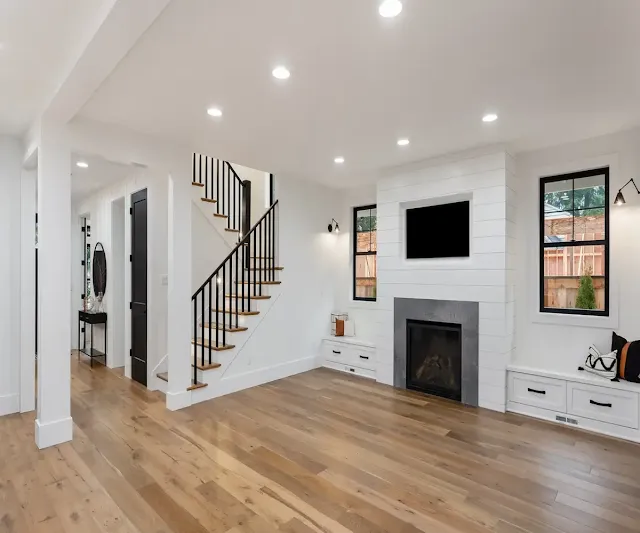Mastering Architectural Lighting Design Tips & Techniques
Mastering Architectural Lighting Design Tips & Techniques
Architectural lighting design is an intricate blend of art and science, involving a meticulous understanding of spatial dynamics, human perception, and lighting technology. Designers meticulously analyze architectural forms, textures, and user interactions to craft lighting solutions that enhance aesthetics and functionality.
They strategically select fixtures, manipulate light intensity and color, and employ advanced controls to create immersive environments that evolve with time and user needs, all while prioritizing energy efficiency and sustainability. This process requires a deep knowledge of lighting principles, collaboration with architects and engineers, and proficiency in cutting-edge design tools and technologies. Ultimately, architectural lighting designers have the power to shape our experiences of the built environment, leaving a lasting impact on how we perceive and interact with spaces.
The importance of architectural lighting design in enhancing the aesthetics and functionality of spaces cannot be overstated, as it plays a crucial role in shaping the overall experience and usability of built environments.
1. Visual Impact: Architectural lighting design accentuates the architectural features and design elements of a space, drawing attention to its unique characteristics and enhancing its visual appeal. By strategically illuminating key focal points, textures, and surfaces, lighting designers create visual interest and drama, transforming ordinary spaces into captivating environments.
2. Ambiance and Mood: Lighting has a profound effect on the ambiance and mood of a space, influencing how occupants perceive and interact with their surroundings. Through the careful selection of lighting fixtures, color temperatures, and intensity levels, designers can evoke different emotional responses and create atmospheres ranging from intimate and cozy to vibrant and dynamic.
3. Functionality and Usability: Effective architectural lighting design improves the functionality and usability of spaces by providing adequate illumination for various activities and tasks. Task lighting, for instance, ensures that work areas are well-lit and conducive to productivity, while ambient lighting creates a comfortable and inviting environment for socializing or relaxation. By optimizing lighting levels and distribution, designers enhance the safety, comfort, and usability of spaces for occupants of all ages and abilities.
4. Spatial Perception and Navigation: Lighting design influences how occupants perceive and navigate through a space, enhancing spatial awareness and wayfinding. By strategically lighting circulation paths, signage, and points of interest, designers guide occupants through the environment and create intuitive navigation cues. Additionally, lighting can visually define boundaries, zones, and spatial relationships, helping users orient themselves within complex or expansive spaces.
5. Energy Efficiency and Sustainability: Architectural lighting design also contributes to energy efficiency and sustainability goals by minimizing energy consumption, reducing carbon emissions, and maximizing the use of natural daylight. Through the integration of energy-efficient lighting technologies, such as LED luminaires, daylight sensors, and lighting controls, designers create lighting solutions that optimize energy performance without compromising aesthetics or functionality.
Illuminating History Architectural Lighting Evolution
Explore the evolution of architectural lighting design over time.
Architectural lighting design has evolved significantly throughout history, tracing back to ancient civilizations where fire was used for illumination in caves and early dwellings. The ancient Greeks and Romans introduced rudimentary oil lamps and candles, which remained prevalent until the Middle Ages. The Renaissance period saw the emergence of more sophisticated lighting methods, including chandeliers and candelabras, reflecting advancements in craftsmanship and design aesthetics.
Master Architectural Lighting Principles & Case Studies
Break down the fundamental principles that guide effective lighting design.
In the realm of architectural lighting design, mastery lies in understanding and applying fundamental principles that govern effective illumination. These principles serve as guiding beacons, shaping the ambiance, functionality, and aesthetics of any space. Let's delve into each principle, dissecting its essence and exploring its implications.
Discover Architectural Lighting Types, Tips & Trends
Understanding Architectural Lighting Fixtures
Lighting plays a pivotal role in architectural lighting design, influencing the ambiance, functionality, and aesthetics of a space. Various lighting fixtures are employed to achieve specific lighting effects and fulfill diverse requirements within architectural projects. Let’s delve into the different types of lighting fixtures commonly utilized in architectural design:
1. Recessed Lights:
Recessed lights, also known as downlights or can lights, are fixtures installed into the ceiling, creating a seamless integration with the architecture. These lights emit a downward-directed beam, providing ambient or task lighting without occupying visual space. They are available in various sizes and shapes, allowing designers to customize the lighting scheme according to the spatial requirements and design aesthetics. Recessed lights are ideal for illuminating corridors, hallways, kitchens, and areas where a clean, minimalist look is desired.
Design






